Ok, so I’ve been at the Bunya Mountains since Friday so haven’t been able to post about the frogging I assisted in on Thursday night, so here it is.
I arrived at Cooran at 6:30pm to assist friend and Catchment Officer, Eva Ford from the Mary River Catchment Coordinating Committee (MRCCC). I first contacted Eva at the beginning of this year to volunteer with frog surveys and monitoring and have had a great time on previous outings. Tonight we were off to four monitoring sites within the new roadworks along the new stretch of highway between approximately Pomona and Cooran. Off to the first site!
After trotting through a cow paddock, we arrive to hear several Adelotus brevis (Tusked frogs) and a few Litoria fallax (Eastern sedgefrogs). Under a frog trap (tiles laid down on the ground to provide shelter for frogs) we found a small Limnodynastes peronii (Striped marshfrog). Eva found a female Litoria wilcoxii (stony-creek frog). Then our ears pick up the call of Mixophyes fasciolatus (Great barred-frog)! An exciting moment. The search begins. He was calling rather closely so we started searching on the ground nearby, with Eva fossicking through the leaf litter. Eventually she found him and I was amazed.
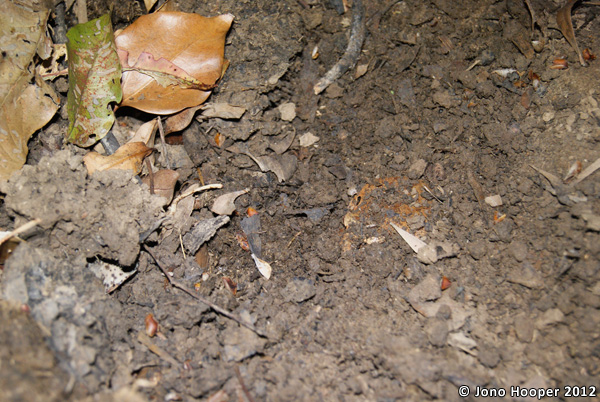
He had buried himself not in the leaves but in the dirt, just like I’d expect a burrowing frog to do. I didn’t know these barred frogs went that far into the ground to conceal themselves, and with the leaf litter on top he was totally hidden!
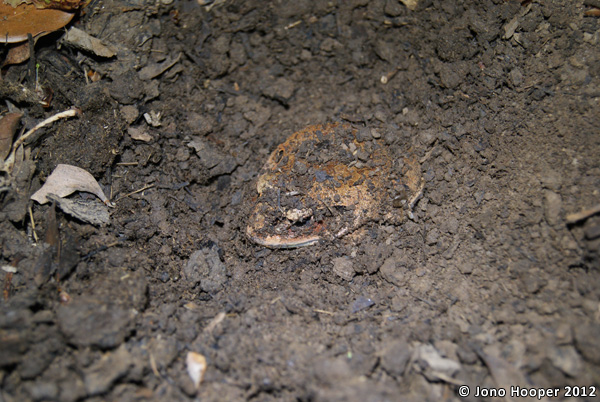
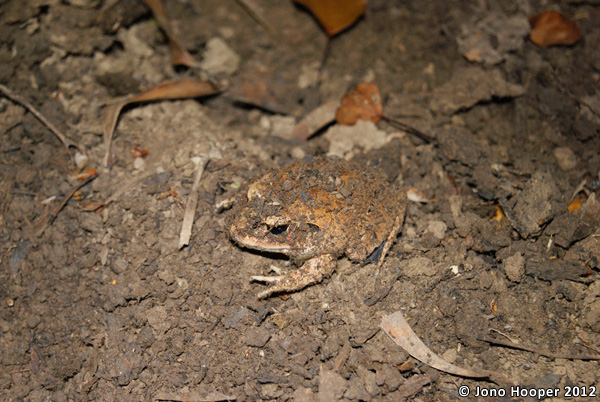
After finishing our photography of him there, we headed downstream and found a few Litoria wilcoxii (stony-creek frogs). During our trips we carry a ANABAT bat detector that records the echolocation calls made by bats, most of which are made at too high of frequency for our ears to detect. This picked up several calls.
Onto our third site, which in the past Eva had seen up to four Mixophyes iteratus (Giant barred-frogs), so I was looking forward to looking around there. Unfortunately though, many of the large camphor-laurel trees had been cut down and removed several months back and so none of these frogs have been seen there since. It’s likely to be because of the instant removal of ‘good’ riparian vegetation for these frogs. I say ‘good’ because although these trees are weeds, they provided shelter and homes to frogs like these. I was determined to get my frog count up since Eva had found them all so far – and I did. This same site boasted hundreds of yellow Litoria wilcoxii (stony-creek frogs), but just a few females that we could find. I was amazed at their numbers. This habitat is quite degraded, though the rubble pushed into the the creek by earth moving machines appears to have provided a suitable habitat for these guys.
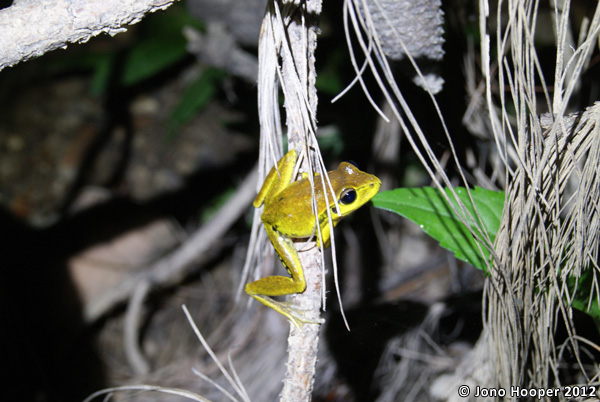
Litoria wilcoxii (stony-creek frog). Males are yellow during breeding season. Notice the aesthetically pleasing pine needles right in the way. I moved them for another shot but so did the frog.
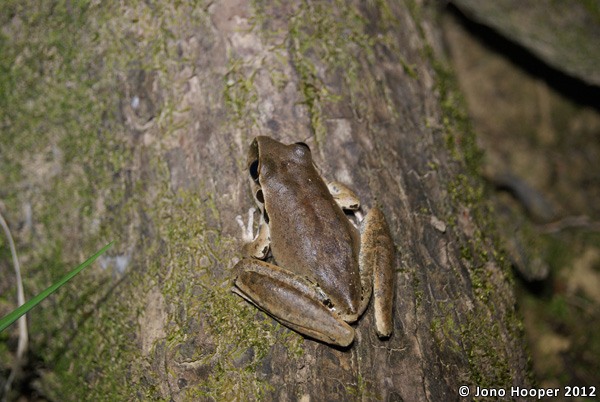

The final site was upstream from here and was home to 10 or so stony-creek frogs and several Adelotus brevis (Tusked frogs). A dense fog had settled on arrival and became even more thick when we left. The fog created what appeared to be a roof only a metre or so above our heads but it was pretty cool (no photos sorry).
The following night the family and I were at the Bunya Mountains for the weekend, during which I had hoped to find or hear some frogs calling from streams within the national park. My sister and I went waling Friday night on one of the tracks that ran beside a creek, but sadly we didn’t hear anything. I reckon it was still a bit too cold for much to be out. Apparently Mixophyes fasciolatus (Great barred-frogs) are often found on moist, warm nights there, but Adelotus brevis (Tusked frogs) haven’t been heard or seen there for years. Judging by the fauna records for the area, stony-creek frogs are often present there though.
It’s certainly warming up on the Coast here, though my area still hasn’t had anything above a millimetre of rain for a month or so. Can’t wait for the rain!
